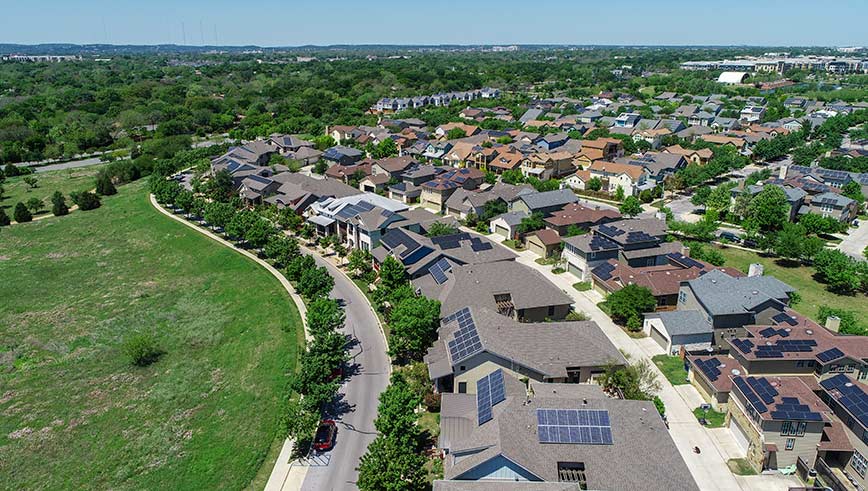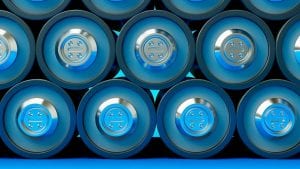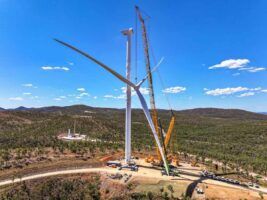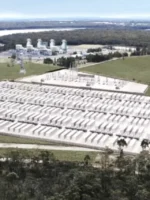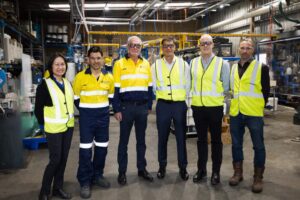Melbourne will become host to one of Australia’s most sustainable property developments, that will see homes paired with renewable energy, energy efficient appliances and made ‘EV-ready’, with the Clean Energy Finance Corporation tipping $54 million into the project.
The Northcote Place project being developed by Metro in Melbourne, which plans to incorporate a range of sustainability features, rooftop solar and the development will utilise low-emissions concrete in its construction, with the project aiming to average a rare 8 star energy efficiency rating.
The development will include home designs centred around the use electric appliances, including electric induction stoves, heat pump hot water systems, and equipped with electric-vehicle ready wiring – allowing all to be powered by electricity sourced from renewable energy and avoiding the use of fossil gas.
Homes will also be provided with at least 3 kilowatts of rooftop solar with the option to have battery storage added, and will include triple glazed windows that will aid in maintaining stable internal temperatures and significantly reduce external noise.
“We are proud to be delivering high quality homes that deliver higher standards of liveability, connection and value to owners and residents,” Metro managing director Luke Hartman said.
“Energy efficient housing is attracting a growing number of owner occupiers who place value on more comfortable housing, lower energy bills and a reduced environmental impact.”
“Developing homes like Northcote Place also supports Australia’s transition to a low carbon future. Interest in environmentally conscious housing is growing and we have seen strong demand for these homes. We expect to see appetite for homes that have similar emissions reducing features increase in the future,” Hartman added.
The development will be constructed using Holcim ECOPact concrete materials, that is able to achieve a 30 to 60 per cent reduction in embodied emissions compared to traditional concrete.
The Clean Energy Finance Corporation will provide Metro with up to $54 million in debt finance for the project, which deliver housing with a low carbon footprint and is expected to achieve an 8 star rating under the Nationwide House Energy Rating Scheme (NatHERS).
Overall, houses built as part of the Northcote Place development are expected to use around half as much energy as compared to a new property built to minimum building code standards, while delivering a more comfortable living experience through better heating and cooling management.
CEFC CEO Ian Learmonth said the development would serve as an example of what can be achieved in energy efficient housing, and how such design features can achieve significant cuts to the emissions footprint of housing.
“Northcote Place demonstrates that by incorporating clean energy technologies and thoughtfully considered design at the beginning of a project, we can deliver homes that are more comfortable and energy efficient, with lower energy costs and reduced carbon emissions,” Learmonth said.
“Australia’s residential sector has an important role to play in decarbonising our economy. Northcote Place demonstrates that a high standard of housing development is readily achievable and with advances in technology we now have even more opportunities to make our homes greener.”
“This project marks the first financing by the CEFC for a housing development featuring this type of low carbon concrete. By working with developers such as Metro, we hope to see these features become standard practice in new home development, to accelerate Australia’s transition to a low carbon economy,” Learmonth added.
The CEFC has previously backed initiatives that sees rooftop solar provided as standard for new residential developments, including a $90 million partnership with property developer Mirvac that saw new homes paired with rooftop solar and battery storage.
The CEFC has also partnered with Bank Australia to offer discounted home loans to buyers of properties that have an energy efficiency rating of at least 7 stars.
ClimateWorks Australia has estimated that around half of Australia’s electricity use, and around a quarter of Australia’s overall greenhouse gas emissions footprint, relate to energy used in properties.

